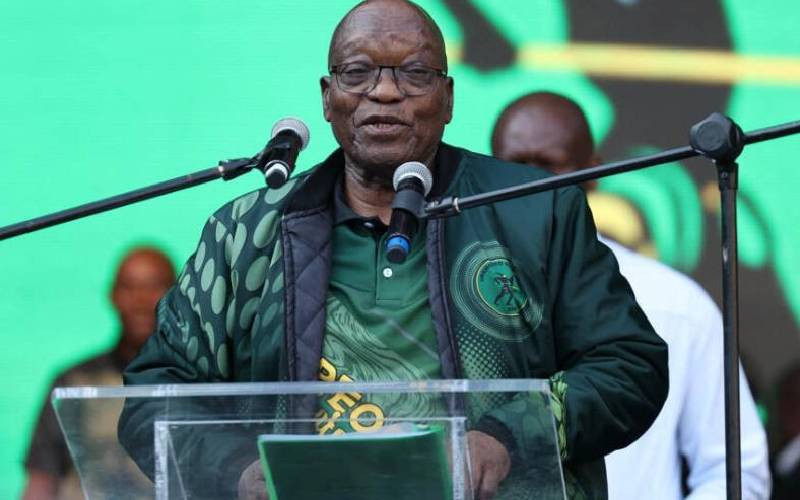BY JEVANS NYABIAGE
SOUTH AFRICA: For years, South Africa has seemed to distance itself from Africa. But if the latest trade figures are anything to go by, then South Africa is slowly changing tack.
South Africa — which is part of Brics, an acronym coined over a decade ago to refer to the emerging economies of Brazil, Russia, India and China and later in 2010, South Africa — saw its trade with the rest of Africa jump by 15 per cent from $22.4 billion in 2011 to $25.7 billion last year.
According to data from a Standard Bank research team, of all the Brics nations, South Africa’s trade with Africa grew the most swiftly in 2012. South African exports to the rest of Africa lifted from $14.7 billion in 2011 to $16 billion in 2012, while imports elevated from $7.7 billion to $9.7 billion.
Last year, Brics-Africa trade reached $301 billion, up from $290 billion in 2011. While still impressive, seen in the context of the general rise in Brics-Africa trade since 2003, last year’s lift of just 3.8 per cent is fairly modest.
2009’s Trade retreat
And, with the exception of the generalised trade retreat in 2009 (due to the global economic fallout), it is the lowest annual increase in Brics-Africa trade since 2000.
China still forms the basis of this relationship, accounting for 56 per cent of Brics’ trade with Africa. India, though, is steadily rising. Last year it accounted for one-quarter of total Brics-Africa trade, up from one-fifth in 2007.
Indian exports to Africa are slowly deepening, and diversifying. Over the course of the five years between 2007 and 2012, Indian exports to Africa grew by 125 per cent, from $12.4 billion to $27.3 billion. In the first half of this year, Indian exports to Africa amounted to $14.3 billion.
Interestingly, having lagged in pace and lustre to the Brics-Africa trade ascent since the onset of the global financial crisis, last year European Union (EU)-Africa trade rose by 10 per cent to touch $430 billion, eclipsing its 2008 trade peak of $395 billion, and, for the first time since the turn of the century, outpacing Brics-Africa annual trade growth.
“Thus far in 2013, a renewed and dramatic rise in Brics-Africa trade seems unlikely. In the first six months of this year Brics-Africa trade amounted to $172 billion, up modestly from $165 billion at the same point in 2012,” says Simon Freemantle, an analyst at Standard Bank, in a research note released last month.
He says that factoring in trade between South Africa and its Southern African Customs Union (SACU) partners — Botswana, Namibia, Lesotho and Swaziland — it is likely that SA-Africa trade would have easily eclipsed $35 billion in 2012.
In the first half of this year, South Africa-Africa trade amounted to $12.7 billion, up slightly from the $12 billion recorded in the first half of 2012.
As a whole, in 2012, South Africa sourced 42 per cent of its crude oil imports from Africa, up from just 15 per cent in 2005.
Analysts say value-added exports from South Africa to Africa provide a counter to weakening demand in traditional markets.
Stay informed. Subscribe to our newsletter
Last year, South Africa exported $2.5 billion worth of machinery (up 25 per cent from 2011) to the continent — $2 billion worth of vehicles (up 35 per cent) and $1 billion worth of electrical and electronic equipment (up 15 per cent).
Meanwhile, exports of these same product categories to the EU dropped by 25 per cent (machinery), 8 per cent (vehicles) and 35 per cent (electrical and electronic equipment). South Africa’s largest non-SACU export market in Africa in 2012 was Zambia, which absorbed $2.7 billion worth of South African products.
Early estimates for China, which is the undisputed engine in the Brics-Africa trade, showed its trade with the continent reached $200 billion in 2012, representing the generally rapid ascent of bilateral ties since 2003.
Lift in trade
However, updated Chinese data suggests the lift in trade with Africa between 2011 and 2012 was far less pronounced. China-Africa trade reached $166 billion in 2011 and in 2012, flows increased by just 1.8 per cent to $169.2 billion.
This means that, apart from the dip in trade in 2009, between 2011 and 2012 China-Africa trade appreciated at its slowest rate since the turn of the century.
In the first six months of this year, China-Africa trade totalled $105.5 billion, representing a slight increase from the first six months of 2012 (by which time trade stood at $98.5 billion), though a far more marked increase on the first six months of 2011 when trade stood at $78.9 billion.
In 2012, India-Africa trade increased by 11 per cent from $63.1 billion to $70.3 billion — boosted by a steady rise in both Indian imports from Africa (from $39.8 billion to $43 billion) as well as Indian exports to Africa ($23.3 billion to $27.3 billion).
As with China, crude oil imports are dominant in India-Africa ties. In 2012, over 70 per cent of total Indian imports from Africa consisted of crude oil. Nigeria is India’s dominant source of supply on the continent.
Last year Brazil-Africa trade dipped slightly by 5 per cent to $26.5 billion — with Brazilian imports from Africa dipping from $15.4 billion to $14.3 billion. Brazilian exports to Africa remained flat at $12.2billion.
In the first half of this year, total trade reached $12.9 billion — a drop from the $13.5 billion in trade, which had been reached by this time last year.
Crude oil imports
Again, crude oil imports from Africa are responsible. In 2012 Brazil imported 6.5 per cent less crude oil from Africa – the moderate decline affecting its three largest import partners (Nigeria, Algeria, and Equatorial Guinea).
In 2012, Russia-Africa trade amounted to $9.4 billion, down 14 per cent from $10.9billion in 2011. In the first half this year, Russia-Africa trade totalled $4.3 billion, down from $5.9 billion at the same time in 2012. This drop is mostly accounted for by a slide in Russian exports to Africa.
Agricultural goods from North Africa still form the spine of modest Russian demand from Africa, mainly for fruit and nuts, cocoa and tobacco.
Morocco provided one-quarter of Russia’s total imports from Africa last year, followed by South Africa (20 per cent) and Egypt (15 per cent).
Similarly, almost 80 per cent of Russian exports to Africa are absorbed by partners in the Maghreb. In 2012, Russian exports to Egypt, mostly for cereals, wood and mineral fuels, totalled $3 billion.
[email protected]
 The Standard Group Plc is a
multi-media organization with investments in media platforms spanning newspaper
print operations, television, radio broadcasting, digital and online services. The
Standard Group is recognized as a leading multi-media house in Kenya with a key
influence in matters of national and international interest.
The Standard Group Plc is a
multi-media organization with investments in media platforms spanning newspaper
print operations, television, radio broadcasting, digital and online services. The
Standard Group is recognized as a leading multi-media house in Kenya with a key
influence in matters of national and international interest.
 The Standard Group Plc is a
multi-media organization with investments in media platforms spanning newspaper
print operations, television, radio broadcasting, digital and online services. The
Standard Group is recognized as a leading multi-media house in Kenya with a key
influence in matters of national and international interest.
The Standard Group Plc is a
multi-media organization with investments in media platforms spanning newspaper
print operations, television, radio broadcasting, digital and online services. The
Standard Group is recognized as a leading multi-media house in Kenya with a key
influence in matters of national and international interest.








